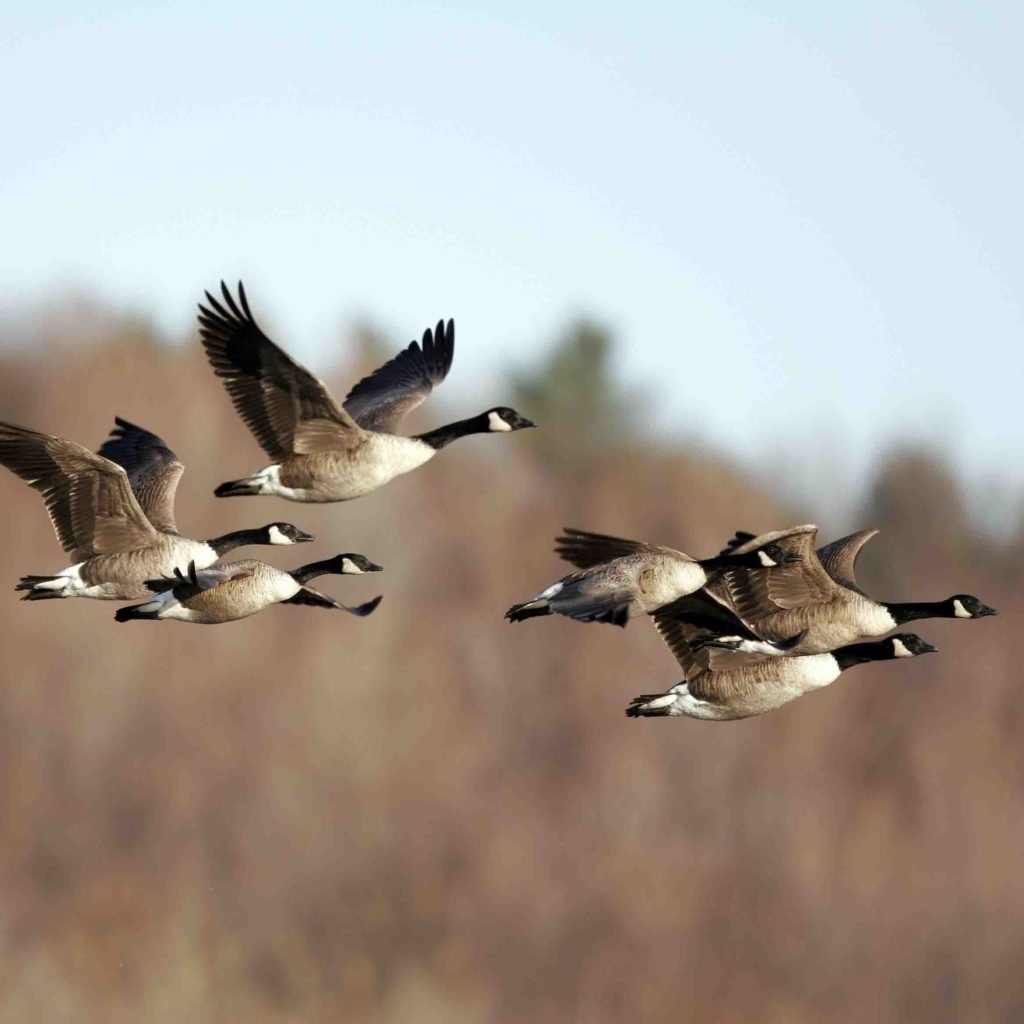Field Waterfowl 101
- Posted on
- By Eric Storey
- Posted in Goose Hunting
- 0

Field Hunting Ducks and Geese.
Hunting ducks and geese has been popular for many years, but never more than in the past few. Especially field hunting. In this article, I am going to go over 3 key parts to field hunting
waterfowl that will hopefully help beginners become more successful, and maybe even teach a few avid waterfowlers something new.
1. SCOUTING
In order to be successful in the field, you obviously have to hunt where the birds want to be. How do you know where the birds want to be? The only way is constant scouting. But where do you start? A good place to start is to find a sizable body of water that is big enough to provide a good roost for a large amount of birds. From there, find the agricultural fields closest to that body of water. That is the most likely spot those birds will be feeding in the mornings and evenings. Now this may sound easy. It’s not. You may have to put a lot of kilometres on your vehicle to find that one field that the majority of the birds are using to feed. Especially later in the season when birds have already fed through many of the fields closest to water, and have to fly farther and farther to feed. Finding the birds is only half the battle. Once you’ve found a field with a “huntable” amount of birds, then comes getting permission from the land owner to hunt there. If you do get permission, then the real scouting starts. Watch the geese the evening before you plan to hunt. Watch where they land when entering the field, and watch where they finish feeding before they fly back to their roost at dark. Where those birds finish off feeding, is where you’re going to want to set up in the morning.
2. THE HIDE
So, you’ve got permission on a field you’re going to hunt. You’ve scouted the field, you know exactly where those ducks and/or geese want to be and where you want to set up. But, how are you going to hide? I find this part of hunting waterfowl is way overlooked by many hunters. These days, ducks and geese are highly pressured by hunters and become extremely wary when entering fields to feed especially as it gets later into the season. There are basically two ways to hide. Layout blinds or A-Frame blinds. No matter which you choose, be sure to stubble it well! Many hunters put a little grass on their blinds and think they are hidden enough, and then start wondering why birds are spooking 80 yards out…The birds are spotting you before they get even close to shooting range. I like to stubble my blind every hunt. You often may be hunting one kind of field one day, such as a wheat field, and then be switching to a corn field for your next hunt. In this case you have to strip all the wheat stubble off your blind and do it all over again with corn stubble. It can get to be annoying and time consuming, but it is definitely something that can make or break your hunt. When concealing the blinds, I like to leave little to no blind fabric showing. When birds are approaching, there are a lot of eyes all looking for something out of place. And if they see it, they won’t be giving you a shot.
3. DECOYS
Now you’ve got your blinds concealed and set up. Time for decoys. There’s a lot of debate around decoys. How many do you use? What kind of spread should you run? Shells or full bodies? Many waterfowlers will have different answers to all these questions. I’m going to share what has worked for me. When I’m out hunting with my buddies, we typically run around 100 full body geese. The more goose decoys you have, the harder it is for birds to pick out your blinds in the spread and the more comfortable the birds will be. Try to use about 75% feeders and 25% walkers/sentries. This way your decoys look relaxed and it mimics birds feeding heavy, which is what those birds are going to the field to do. The only time we run shells is late season when there is snow on the ground to imitate birds sitting on the snow to melt it so they can feed. Remember those geese and ducks are in that field to eat. They have no reason to sit in a field when there isn’t any snow. The spread we run almost every hunt is the standard “U” formation, leaving a big pocket for those ducks and geese to land out front with the wind at our back. If we’re hunting ducks as well as geese at the same time, we do the exact same thing but add 2-4 spinning wing decoys to the spread. In my experience, ducks love to be around geese, and if you have spinning wing duck decoys in your spread, those ducks will cup up and come right in. Geese on the other hand, do not like spinning wing decoys. If you can, use spinning wing decoys that have a remote so you can turn them on when ducks are coming in, and turn them off when geese are coming in. When hunting only ducks we do the same thing with our full body ducks as we do with our full body geese while also using 2-4 spinning wing duck decoys. If you’ve scouted the field well and your blinds are hidden, you shouldn’t have any problems filling your limit. Well that about covers just a few of the key parts to field hunting waterfowl. There’s so much that goes into this great sport that we love that can’t all be covered in one article. Hopefully you’ve learned a thing or two while reading this, and good luck this waterfowl season.

Comments
Be the first to comment...